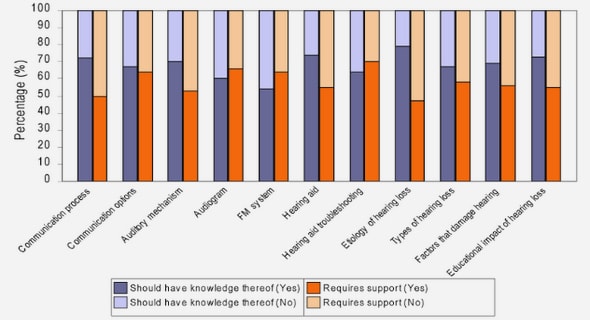(Downloads - 0)
For more info about our services contact : help@bestpfe.com
Table of contents
CHAPTER I – INTRODUCTION
1. Plant immunity: how plants detect the presence of pathogenic microbes and generate the immune response
1.1. PATTERN-TRIGGERED IMMUNITY (PTI)
1.1.1. PRRs: the main players of PTI
1.1.2. Signaling downstream of PRRs
1.2. EFFECTOR-TRIGGERED IMMUNITY (ETI)
1.2.1. ETI, the second layer of defense against more adapted pathogens
1.2.2. Resistance proteins: the main players of ETI
1.2.3. The guard and decoy model of effector perception by NLRs
1.2.4. Regulations of R proteins
1.2.5. Regulation of NLRs downstream signaling
1.2.6. ETI outputs: a continuity of PTI responses?
2. Mitogen-activated Protein Kinases (MAPKs): hubs with an essential role in immune signaling
2.1. MAPKs in Arabidopsis
2.1.1. MAPKKKs
2.1.2. MAPKKs
2.1.3. MAPKs
2.2. Mechanisms regulating MAPK modules specificity, substrate specificity, and signaling
2.2.1. Mechanisms regulating MAPK module specificity
2.2.2. Mechanisms regulating MAPK substrate specificity
2.2.3. Mechanisms regulating MAPK signaling
2.3. The role of MPK3, MPK4, and MPK6 in immunity
2.3.1. MAPKKK3/MAPKKK5-MKK4/MKK5-MPK6/MPK3 pathway
2.3.2. MEKK1-MKK1/MKK2-MPK4 pathway
2.3.3. MAPKs are targets of pathogenic effectors
2.3.4. MAPKs in ETI
3. The role of hormones in immunity
3.1. SA pathway
3.1.1. SA biosynthesis
3.1.2. SA metabolism
3.1.3. Regulation of SA biosynthesis
3.1.4. Signaling downstream of SA
3.1.5. SAR
3.2. JA pathway
3.2.1. JA biosynthesis
3.2.2. JA perception and downstream signaling
3.2.3. Regulation of the JA pathway
3.3. Ethylene pathway
3.3.1. ET biosynthesis
3.3.2. ET perception and signaling
3.3.3. ET pathway regulation
3.4. Crosstalk between defense hormones
3.4.1. JA-ET
3.4.2. JA-SA
4. The importance of membrane trafficking in plant immunity
4.1. Overview of the trafficking pathways in plants
4.1.1. The secretory and vacuolar pathway
4.1.2. The endocytic pathway
4.2. The involvement of membrane trafficking in plant immunity
4.2.1. The importance of the secretory machinery in plant immunity
4.2.2. Unconventional secretory pathways in plant immunity
4.2.3. The role of the endocytic pathway in plant immunity
4.3. SNAREs: Very conserved proteins and the main executors of membrane fusion processes in the endomembrane system of plants
4.3.2. SNAREs are involved in plant immunity: the case of SYP121 and its interacting SNARE partners
4.3.3. SNAP33 is a SNAP25-like gene with an intriguing trait
5. Objectives of my Ph.D.
CHAPTER II – RESULTS
1. Characterization of the lesion-mimic phenotype of snap33 mutants
1.1. Isolation of novel snap33 mutants
1.2. snap33 knock-out mutants display constitutive cell death and H2O2 accumulation
1.3. MPK3, MPK4, and MPK6 activation upon flg22 treatment is more intense in the snap33 mutants
1.4. High temperatures partially suppress the dwarf phenotype of snap33
1.5. Transcriptomic analyses of the snap33-1 mutant confirm that SNAP33 mutation results in constitutive expression of defense-related genes
1.5.1. Experimental design
1.5.2. Analyses of the differentially expressed genes
1.6. snap33 ‘s phenotype is related to constitutive defense signaling
1.6.1. The SA, JA, and ET marker genes are up-regulated in the snap33 mutants
1.6.2. SA, JA, and ET levels are higher in the snap33-1 mutant
1.6.3. snap33-1’s phenotype is partially reverted by mutations in the JA and SA pathways
1.6.4. R protein signaling is constitutively induced in the snap33-1 mutant
1.6.5. snap33-1’s phenotype is partially dependent on CPK5 and TN2
1.7. Discussion
1.7.1. The phenotype of snap33 resembles that of several lesion-mimic mutants
1.7.2. The SA sector is dominant in the snap33 mutant
1.7.3. snap33 mutants mimic ETI responses
1.7.4. Is the snap33 phenotype only related to auto-immunity?
1.8. Conclusion and perspectives
2. Studying the relationship between SNAP33 and the MEKK1-MKK2-MPK4 MAPK module
2.1. SNAP33 PTMs and interactions
2.1.1. SNAP33 PTMs
2.1.2. SNAP33 interactions
2.2. Is SNAP33 an interacting partner of MEKK1-MKK2-MPK4 MAPK module?
2.2.1. SNAP33 interacts with MEKK1, MKK2, and MPK4 in vivo by BiFC
2.2.2. SNAP33 does not interact with MEKK1, MKK2, and MPK4 by Y2H
2.2.3. SNAP33 does not interact with MKK2 and MPK4 by in vitro pull-down assays
2.2.4. SNAP33 does not interact with MKK2 and MPK4 by co-immunoprecipitation assays in vivo
2.3. Is SNAP33 a substrate of the MEKK1-MKK2-MPK4 MAPK module?
2.3.1. Kinase assays using the in vitro produced recombinant proteins
2.3.2. Kinase assay using the in vivo purified MPK4 and MKK2
2.4. Is there a genetic relationship between SNAP33 and the MAPK module?
2.4.1. snap33-1 phenotype is not suppressed by the summ2-8 mutation
2.4.2. snap33-1 phenotype is not suppressed by the smn1 mutation
2.5. Discussion
2.5.1. Is SNAP33 an interacting partner of the MAPK module?
2.5.2. Is SNAP33 a substrate of MPK3, MPK4, and MPK6?
2.5.3. SNAP33 is not involved in the same pathway as that of the MEKK1-MKK2-MPK4 MAPK module
CHAPTER III – GENERAL CONCLUSIONS AND PERSPECTIVES
1. Summary of my results
2. Perspectives
CHAPTER IV – MATERIALS AND METHODS
1. Materials
1.1. Plant material
1.2. AGI number of the main genes
1.3. Bacterial strains
1.4. Yeast strains
1.5. Growth media
1.5.1. Plant growth media
1.5.2. Bacteria and yeast growth media
1.6. Vectors
1.7. Primers
1.7.1. Cloning primers
1.7.2. Genotyping primers
1.7.3. Quantitative PCR primers
1.7.4. RT PCR primers
1.8. Antibiotics
1.9. Antibodies
1.9.1. Primary antibodies
1.9.2. Secondary antibodies
2. Methods
2.1. Plant methods
2.1.1. Plant growth
2.1.2. Hormone quantification
2.1.3. BiFC experiments
2.1.4. Stainings
2.2. Protoplast methods
2.2.1. Protoplast’s isolation
2.2.2. Protoplast’s transformation
2.3. Bacteria methods
2.3.1. Bacterial transformation
2.3.2. Agrobacterium transformation
2.4. Yeast methods
2.4.1. Yeast transformation
2.4.2. Yeast two-hybrid (Y2H) analysis for protein-protein interaction
2.5. DNA methods
2.5.1. Plasmid DNA isolation
2.5.2. Plant DNA extraction for genotyping
2.5.3. PCRs
2.5.4. dCAPS genotyping
2.5.5. Cloning PCRs
2.5.6. DNA migration
2.5.7. DNA digestion
2.5.8. DNA sequencing
2.5.9. Cloning
2.6. RNA methods
2.6.1. RNA isolation
2.6.2. cDNA synthesis
2.6.3. Quantitative PCRs
2.6.4. Transcriptomic analyses
2.7. Protein methods
2.7.1. Native protein extraction
2.7.2. Bradford protein dosage
2.7.3. Recombinant protein expression and purification
2.7.4. Co-immunoprecipitation assays for protein-protein interactions
2.7.5. Pull-down assays
2.7.6. Kinase assays
2.7.7. SDS- PAGE and immunoblotting
2.8. Plotting, data interpretation and statistical analyses
REFERENCES
SUPPLEMENTARY DATA



